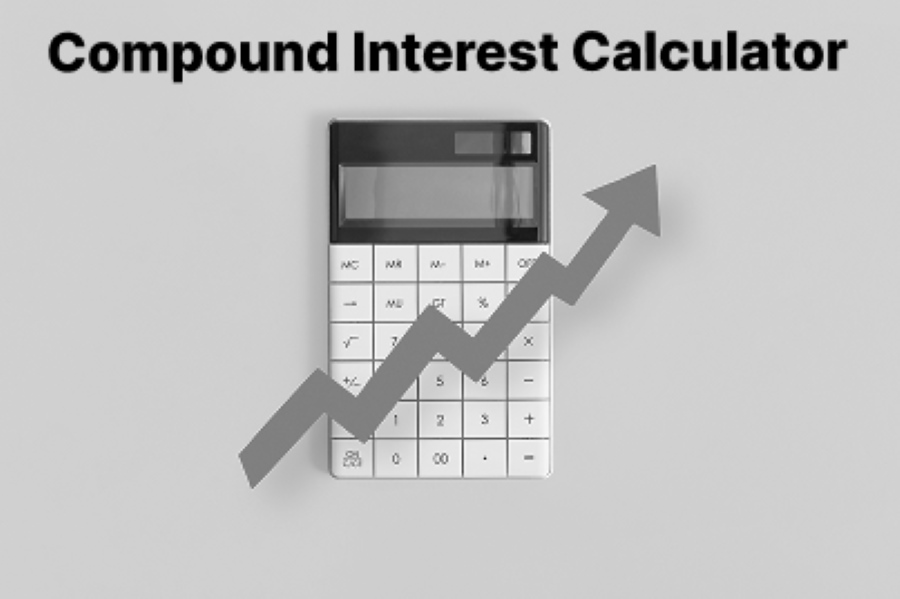Compound Interest Calculator
Total investment
Tenure (Years)
Interest Rate (P.A)
A Detailed Guide on How to Use Compound Interest Calculator

Compound interest is the one that individuals earn on their investment plus accumulated interest. It helps individuals to earn a higher return on their savings and investments. However, compound interest can affect individuals negatively when they are paying interest on a loan. Before investing or taking a loan, one thus needs to calculate compound interest which they can easily do by using a compound interest calculator.
Wondering what a compound interest calculator is or how to use it? Read the following sections and get a clear idea about the same!

Table of Contents

What is a Compound Interest Calculator?
Compound Interest Calculator is an online tool that helps loan applicants or investors calculate the amount they are going to pay or receive throughout the term of the loan or investment tenure.
A compound interest calculator helps individuals to create a projection for compound growth on a savings account or investment for a period of time on the basis of ongoing interest rates.
As individuals are aware of the compound interest calculator, we must focus on the calculation process.
What is the Formula to Calculate Compound Interest?
There is a standardised compound interest formula. Individuals can use the following formula to compute compound interest easily,
Formula to Calculate Compound Interest:
A = P (1+r/n) ^nt
The variables in the formula are as follows,
- A = Compound interest
- P = Principal amount
- R/r = Rate of interest
- N/n = Number of times interest compounds in a year
- T/t = Tenure/ number of years
Let’s decode the compound interest formula with an example,
Suppose an individual has invested ₹ 50,000 for 3 years at an annual interest rate of 10%. Therefore, in the first year, the accrued interest will be the following,
How to use a Compound Interest Calculator?
Currently, there are various compound interest calculators available on the internet. To use this calculator, one has to follow the steps mentioned below.,
Step 1
Enter the total investment value or use the slider to choose the amount you want to invest.
Step 2
Then choose the tenure and interest rate to get the result instantly.
Benefits of using Compound Interest Calculators
Following is a list of advantages of using a compound interest calculator -
What are the Components of Compound Interest?
There are four components of compound interest. These are principal, interest, compounding frequency, time horizon.
Factors Affecting Compound Interest
Factors that affect compound interest are -
At this point, we have reached the end of this piece on the compound interest calculator. Read the process and details mentioned above attentively and use this online tool without any hassle.
Explore Calculators that will Simplify Your Financial Planning













